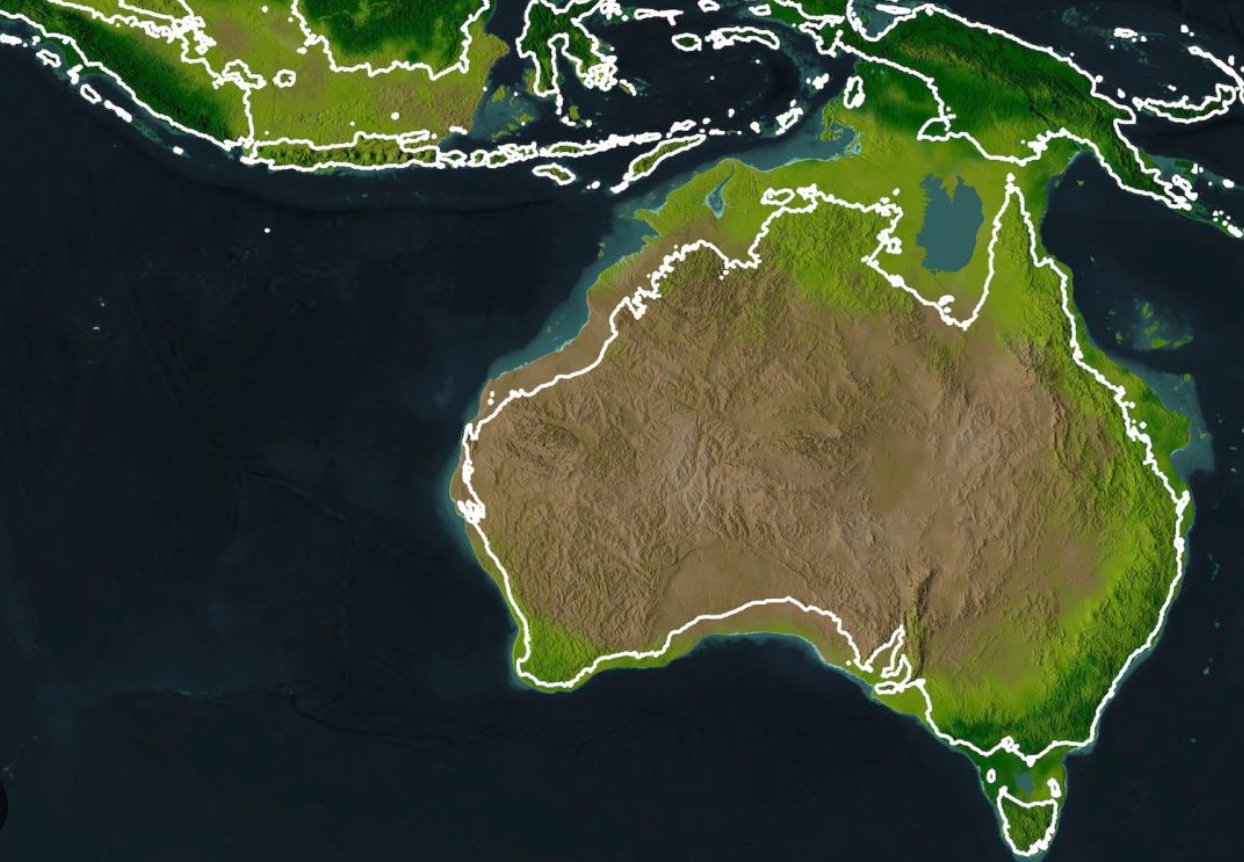Archeologists Discover Ancient Supercontinent Sahul, Linked Asia to Australia
Archaeologists have uncovered evidence of Sahul, a lost supercontinent that facilitated human migration from Asia to Australia about 70,000 years ago. This finding hints towards the likelihood of many yet-undiscovered historic sites across the globe.
What is Sahul?
Sahul was a supercontinent exposed during the last ice age due to glaciation, which lowered global sea levels. This landmass connected present-day Australia with Papua New Guinea to the north and Tasmania to the south.
Discovery of Sahul
Researchers employed data analysis and reverse engineering of geological and environmental conditions to simulate Sahul’s landscape between 75,000 and 35,000 years ago. The simulation revealed two potential migration routes and numerous archaeological sites, indicating ancient human movement across this landscape in search of resources.
Significance
The discovery of Sahul provides insights into ancient human migration patterns and highlights the rapid adaptation of humans to diverse and adverse environments. This breakthrough could pave the way for uncovering more historical mysteries.
GKToday Notes: Sahul
- Sahul is a prehistoric supercontinent.
- It comprised present-day Australia, New Guinea, and Tasmania.
- Sahul existed during the ice ages.
- Sea levels were much lower, exposing the land bridges.
- It separated into its current landmasses roughly 10,000 years ago.
- Sahul was home to a diverse range of megafauna.
- The first human inhabitants are believed to have arrived over 50,000 years ago.
- Sahul is named after the Sahul Shelf, the submerged landmass.
- Indigenous Australian myths reference the ancient land connections.
- Sahul’s separation played a crucial role in species evolution and distribution.
Month: Current Affairs - May, 2024
Category: Science & Technology Current Affairs








